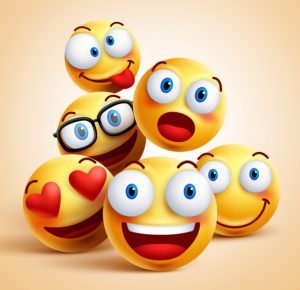Although it feels just like yesterday, in reality, I graduated college 21 years ago. I can still remember the trepidation I felt as went to take my grammar test. Passing ensured I would be allowed to take the first of many classes needed to obtain my journalism degree. Over the next four-ish years the mechanics of language were further drilled into me thanks to diligent professors and my constant companions: The AP Stylebook and the MLA Handbook (which was needed for my English degree). Not long after graduating, I found myself working in an ad agency. This is where I learned that some of the laws of grammar could be bent for the sake of ‘style.’ Anytime the client wanted written copy that wasn’t necessarily grammatically correct, I was told by more seasoned creatives it was OK because it was for ‘style.’ Let me tell you; I saw a lot of ‘style’ decisions during my time there. In fact, anytime I see an ad that misses the mark, I like to think there was a copywriter in the planning meetings who advised the rest of the team that it was wrong or just a flat-out bad idea… and was ignored. Because of course, it makes sense to boldface, underline, and italicize a sentence, right? For that reason (and others) samples like those rarely made it into my professional portfolio.
 Today, the rules of our language are evolving again with the ever-growing presence of emojis. Even though these ideograms have been on Japanese mobile phones since the late 1990s, it wasn’t until Apple introduced them on their iPhones (followed by Android and others) that they began catching on and started being used by everyone from kids to grandparents. Now, you may be thinking the only place for smiley faces and thumbs up are when chatting between friends or family, and that they have no place in professional writing. And that’s where you’d be wrong. Last year a global translation firm based in London announced it was a hiring an “emoji translator.” Most people assumed it was a joke, but as Jurga Zilinskiene, CEO and founder of Today Translations said, “We are investing time and energy into this is because we believe emoji usage will become more and more popular.” Think about how many times something has been lost in translation with the spoken word. A British friend once sent me an email asking if a t-shirt she’d seen featuring trainers (sneakers) and the phrase ‘Keep on Chuckin’’ referred to throwing up. Of course, I knew the ‘Chuckin’ referred to the colorful Converse sneakers made popular by former basketball player Chuck Taylor. The same idea of lost in translation holds true for emojis. For instance, in western cultures, the laughing emoji with tears is commonly used to convey the sender is laughing so hard he or she is crying. But in Middle Eastern cultures, they interpret the same emoji as depicting crying and grief. While it might seem like a small difference to some, as our global boundaries continue to expand personally and professionally, using the wrong emoji, just like using the wrong word or phrase, could have disastrous consequences.
Today, the rules of our language are evolving again with the ever-growing presence of emojis. Even though these ideograms have been on Japanese mobile phones since the late 1990s, it wasn’t until Apple introduced them on their iPhones (followed by Android and others) that they began catching on and started being used by everyone from kids to grandparents. Now, you may be thinking the only place for smiley faces and thumbs up are when chatting between friends or family, and that they have no place in professional writing. And that’s where you’d be wrong. Last year a global translation firm based in London announced it was a hiring an “emoji translator.” Most people assumed it was a joke, but as Jurga Zilinskiene, CEO and founder of Today Translations said, “We are investing time and energy into this is because we believe emoji usage will become more and more popular.” Think about how many times something has been lost in translation with the spoken word. A British friend once sent me an email asking if a t-shirt she’d seen featuring trainers (sneakers) and the phrase ‘Keep on Chuckin’’ referred to throwing up. Of course, I knew the ‘Chuckin’ referred to the colorful Converse sneakers made popular by former basketball player Chuck Taylor. The same idea of lost in translation holds true for emojis. For instance, in western cultures, the laughing emoji with tears is commonly used to convey the sender is laughing so hard he or she is crying. But in Middle Eastern cultures, they interpret the same emoji as depicting crying and grief. While it might seem like a small difference to some, as our global boundaries continue to expand personally and professionally, using the wrong emoji, just like using the wrong word or phrase, could have disastrous consequences.
To further prove the validity of emoji’s place in writing, two years ago Oxford Dictionaries named the laughing/crying face emoji its word of the year. According to Oxford Dictionaries’ president Casper Grathwohl it’s because, “You can see how traditional alphabet scripts have been struggling to meet the rapid-fire, visually focused demands of 21st-century communication. It’s not surprising that a pictographic script like emoji has stepped in to fill those gaps.”
So, if this type of communication is here to stay, how can writers use it to their benefit and become proficient enough to help create new avenues of income. Additionally, how can we convince clients of its value?
As luck would have it, my lifelong friend and fellow freelance writer, Kim, recently has been tasked with using emojis for the STEM (science, technology, engineering, mathematics) section at a local science center. If you think about it, this makes perfect sense. Since young children and students on field trips will be the primary audience looking at the displays, using emojis creatively articulates the visual-driven language they are used to. So, the displays’ operating instructions will primarily use emojis, and traditional copy will be used for the content. Kim said there were four reasons why the client requested the displays to be written this way:
1.It allows for communication with a variety of reading levels.
2.The message can be communicated with readers whose first language is not English.
3.It can communicate with readers who don’t read English.
4.It speaks to cultural relevance.
I believe we are just beginning to understand how emojis fit into our language and how they can benefit the way we communicate. As with any new medium, knowing when and how to use it is key. Companies must consider their brand and if it makes sense to use emojis when speaking to their target audiences. Just because it’s popular doesn’t mean it’s the right fit. And writers must be willing to step out of their comfort to try something new. Otherwise, others who are willing to try will snap up potential work that could have been yours.
Brush up on your emoji vocab by visiting Emojipedia.org and Emojisaurus.com.
Have you used emojis in more conventional writing? Share your experience in the comments.


